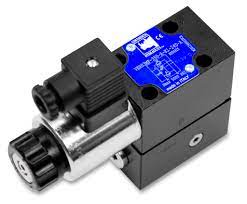1. Adjustable Set Points: Allows for the customization of pressure levels, providing flexibility in meeting specific operational requirements.
2. Pressure Relief: Safeguards hydraulic components by relieving excess pressure to prevent system damage and ensure safety.
3. Pressure Reducing Capability: Enables the reduction of high-pressure levels to maintain optimal working conditions within the hydraulic system.
4. Precision Control: Provides accurate and precise control over fluid pressure, enhancing the overall efficiency of hydraulic operations.
5. Versatility: Adaptable to various hydraulic systems and applications, contributing to their versatility in different industrial settings.
6. Compact Design: Often designed with a compact form factor for easy integration into hydraulic circuits with limited space.
7. Durability: Constructed with durable materials to withstand the demanding conditions of hydraulic systems and ensure long-term reliability.
8. Ease of Adjustment: Designed for easy adjustment and fine-tuning of pressure settings, facilitating quick customization.
9. Integral Components: May include features like pilot-operated controls and feedback mechanisms for enhanced functionality.
10. Application Diversity: Used in a range of industries, including manufacturing, construction, and aerospace, highlighting its broad applicability.
Hydraulic Pressure Control Valve
Description :-
The Hydraulic Pressure Control Valve is a crucial component in hydraulic systems, regulating and controlling fluid pressure to optimize performance. Employed in diverse industrial applications, this valve ensures precision by adjusting pressure levels in hydraulic circuits. With features such as adjustable set points, relief, and pressure reducing capabilities, it enhances system safety and efficiency. The valve enables precise control over hydraulic forces, safeguarding components from excess pressure. Commonly used in manufacturing, construction, and aerospace, the Hydraulic Pressure Control Valve plays a pivotal role in maintaining system stability, preventing damage, and facilitating precise hydraulic functions across various machinery and equipment.

Features of Hydraulic Pressure Control Valve